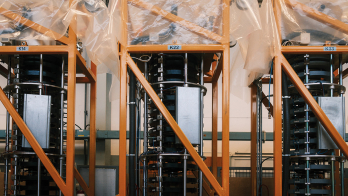By Stephan Russenschuck
Wiley
Hardback: £165 €204 $275

The LHC is an amazing engineering achievement supported by a long programme of developments. CERN has been encouraging the development of technologies required to complete the project since the late 1960s (for example, the GESSS collaboration between the Saclay, Karlsruhe and Rutherford Laboratories). The quality of this work has been recognized internationally and it has contributed to spin-off activities, especially in the development of superconductors and in magnetic-field computation. With the completion of the LHC, and recognizing CERN’s desire to maintain the competences required to design accelerators, it is the right time to publish a book on the computer methods developed to design the LHC magnets.
In this book, Stephan Russenschuck provides an extremely useful and comprehensive description of magnetic-field computation for particle-accelerator magnets. It gives practical information and describes simple methods of analysis; in addition, it includes the abstract mathematics necessary to understand the finite element methods that were developed specifically for the design of the magnets for the LHC’s main ring. The final chapter examines optimization methods, particularly those implemented in the ROXIE software.
The successful design of the LHC magnets required highly accurate field-computation methods that were capable of modelling effects such as conductor and cable magnetization, which are uniquely important to accelerators. Even the LHC’s superconducting magnets quench, when a small resistive volume diffuses rapidly through the coil structure, driven forward by the heat it generates. This book’s chapters describe methods for modelling these effects, and demonstrate the accuracy of the results by comparison with measurements. The appendices include practical information about cryogenic material properties required for quench analysis.
This is a well presented book that makes excellent use of computer graphics to show results and explain phenomena. The graphics showing interstrand coupling currents in conductors and cables are particularly clear and help to make this chapter easy to understand.
Russenschuck has written a valuable addition to the library of those involved in the design of accelerator magnets.








